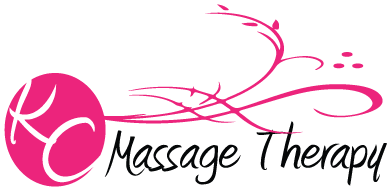Surprising Medical Benefits of Therapeutic Massage
Despite massage’s reputation as a self-indulgent luxury, an increasing number of people are embracing it — not just as a “spa treatment,” but as a powerful therapeutic tool.
Americans currently log more than 114 million trips to massage therapists every year. Massage therapists are the second most visited complementary and alternative medicine providers behind chiropractors. All told, Americans spend up to $11 billion a year on massage. [source] And statistics from the American Massage Therapy Association project that over the next five years, that number is likely to grow considerably.
What we’re getting for our money, whether we realize it or not, is an access code of sorts — a healing key capable of opening the body’s stickiest and most difficult to reach locks.
Scrunching our shoulders, craning our necks, sitting for hours, driving in rush-hour traffic and other stress reactions we may not notice can create patterns of muscle tension (referred to as “holding”) in the body. And when muscles are chronically tense or tweaked, it can have a nasty effect on both our bodies and our minds.
Persistent musculoskeletal tension can restrict blood circulation and nutrient supplies to the body’s organs and tissues. As the weblike connective tissue (fascia) that envelops the muscles gets increasingly dense and less mobile, it can negatively affect posture and breathing. The experience of low-grade, habitual tension can contribute to chronic hormonal, biochemical and neurological problems of all kinds. Intead of turning to alternative medicine practices like massage, we are spending far too much money on pharmaceutical “cures” which cover up the problem rather than addressing the underlying issues.
Massage interrupts such stress-inducing patterns, and helps nudge the body back into a natural state of balance, clearing your mind and body of tension.
So what is massage, exactly? Scientists who study its health benefits often use the therapy’s broadest definition: “The manipulation of soft tissue for the purpose of producing physiological effects.”
Massage Therapy helps Alleviate Anxiety
In conventional medicine, double-blind, placebo-controlled studies are the gold standard. But massage and most other forms of bodywork don’t lend themselves well to such studies.
For example, in 2004, Christopher Moyer, PhD, a psychologist at the University of Wisconsin–Stout, published a meta-analysis on massage therapy research and found that, on average, research subjects who received massage had a lower level of anxiety than those who did not.
“My research consistently finds that massage does have an impact on anxiety,” says Moyer. “We don’t know exactly why, but people who get massage have less anxiety afterward.”
One popular explanation is that massage lowers the body’s levels of cortisol, the hormone notorious for triggering the body’s fight-or-flight response. “No matter how we measure cortisol — in saliva or urine, or how often, we always find that massage has a beneficial effect,” says Tiffany Field, PhD, a researcher at the Touch Research Institute at the University of Miami’s Miller School of Medicine.
Although Moyer is yet to be convinced of the cortisol connection, both he and Field agree that massage is potentially very therapeutic for what’s known as “state” anxiety. Unlike generalized anxiety disorders, state anxiety is a reaction to something you can pinpoint, such as a troubling or traumatic event, circumstance, or setting.
Although more research is needed, says Moyer, “some experts posit that the reported alleviation of state anxiety could be a result of something as simple as the social and psychological environment where massage takes place.”
Relieve Lower-Back Pain
Aside from stress, if there’s one thing that drives people to the massage table in droves, it’s pain. Especially lower-back pain, which up to 85 percent of Americans experience at some point during their lives.
In 2008, the Cochrane Collaboration (a global, independent, nonprofit organization that reviews the usefulness of healthcare interventions) published an examination of the evidence linking massage to relieving lower-back pain. Reviewing 13 clinical trials, they found massage to be a promising treatment. [source]
“Physical pain is like the alarm system of a house,” says Andrea Furlan, PhD, a clinical epidemiologist who specializes in massage at the Institute for Work & Health in Toronto. “With acute pain, like a burn or a broken bone, the pain signal indicates something is wrong. But, if you have pain every day, like chronic back pain, the alarm is malfunctioning. Massage may not be able to turn off the alarm, but it can lower the volume.”
Given how positively it affects the rest of the body and mind, and how well it moderates stress, it probably comes as no surprise that massage therapy can also benefit the heart — in part by reducing blood pressure. In his meta-analysis, Moyer found that massage significantly lowers blood pressure, at least temporarily.
He notes that the findings are consistent with the theory that massage can trigger the body’s parasympathetic nervous system, which helps prompt the body to return to biochemical balance and emotional ease after enduring a stressful event.
But perhaps the bigger takeaway here is that massage can help unlock the body’s healing potential not by any one means, but rather by many. As epidemiologist Andrea Furlan points out, “Well before drugs or surgical procedures were developed, people used massage to treat almost everything.” Still, today, she notes, “when we get hurt, our first instinct is to rub.”
Amy Buttell, for one, doesn’t need any more evidence than her own transformation. “I don’t know if it’s the touch, the warm table, or the fact that I get to turn my phone off for an hour, but I do know that massage is worth every penny.”
